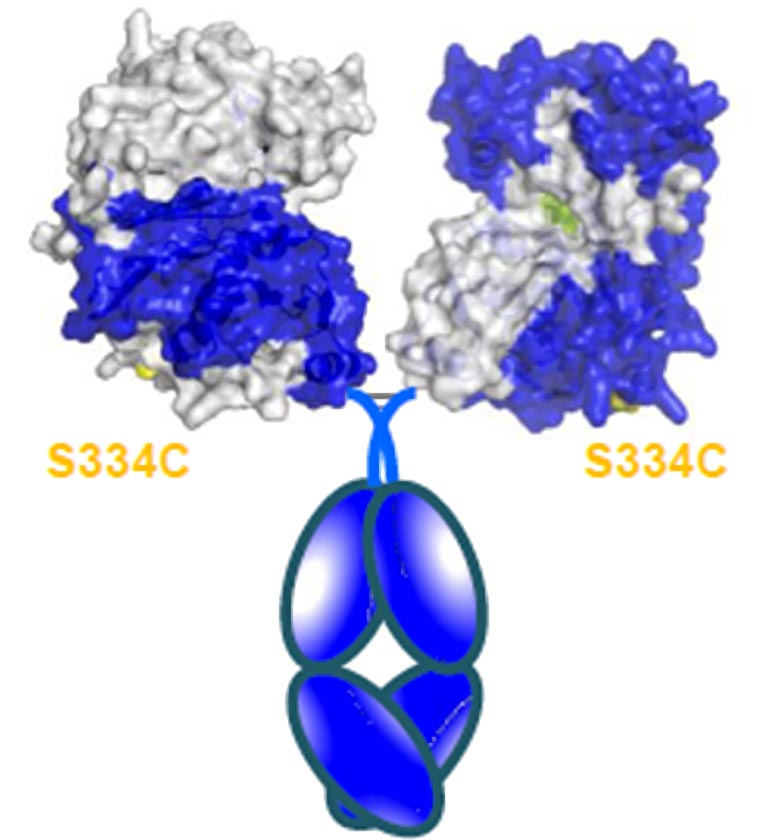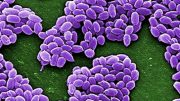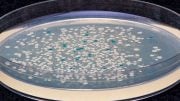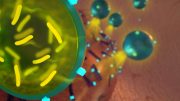
Researchers have taken a step toward the development of a therapeutic that can treat infection of antibiotic-resistant strains of anthrax in mice without antibiotics.
Anthrax-causing spores were mailed to news organizations and members of Congress during the “Amerithrax” attacks of 2001, sickening at least 22 people and killing five. Researchers are gearing up to combat the bacteria’s antibiotic-resistant variants, which are a rising source of concern. Now, a team has made progress toward the creation of a therapy that may treat the infection in mice without the use of antibiotics, as reported today (September 14, 2022) in the journal ACS Infectious Diseases.
Bacillus anthracis is a type of gram-positive, rod-shaped bacteria that can lead to anthrax infection through exposure to its spores, either by ingestion, inhalation, or a cut in the skin. Anthrax infection can lead to difficulty breathing, skin ulcers, or even death. Although antibiotics against anthrax exist, resistance to these drugs can occur over time.

This engineered enzyme with bits of antibody stuck to it can break apart the capsule of B. anthracis bacteria, allowing the immune system to fight back. Credit: Adapted from ACS Infectious Diseases, DOI: 10.1021/acsinfecdis.2c00227
One type of B. anthracis, called the Ames strain, is particularly virulent because the bacteria can wrap itself in a protective capsule of poly-D-glutamic acid. This acts like a cloak of invisibility, which helps the bacteria evade the human immune system. A B. anthracis enzyme called CapD anchors the capsule material to the bacteria. However, previous studies have reported that the enzyme can be engineered to degrade the capsule instead, making the bacteria susceptible to the immune system.
Studies have also demonstrated that providing mice with the engineered CapD can help treat an Ames-strain anthrax infection without the use of antibiotics. Additionally, Patricia Legler and colleagues have demonstrated that adding polyethylene glycol (PEG) to this version of CapD can help the enzyme last longer, increasing mouse survival. In this new study, the research team wanted to optimize the treatment even further.
To improve the re-engineered enzyme’s lifetime in the body and deliver a bigger punch, the scientists added PEG and fused the CapD protein with part of a mouse antibody. This resulted in two CapD enzymes bound together, which would essentially double its capsule-binding power. The research team created several versions of the enzyme and subjected them to many rounds of optimization, deleting and inserting different segments until they achieved a sequence that both held its 3D shape and performed as expected in a range of pH values.
When tested in a mouse model, this construct lasted longer than the previous version without the fused antibody, though it had reduced activity. The scientists say that more research is needed to produce the ideal construct, but the results are an important step toward a better treatment against antibiotic-resistant B. anthracis strains.
Reference: “Engineering an Fc-fusion of a Capsule Degrading Enzyme for Treatment of Anthrax” 14 September 2022, ACS Infectious Diseases.
DOI: 10.1021/acsinfecdis.2c00227
The authors acknowledge funding from the Defense Threat Reduction Agency.









Be the first to comment on "Engineering an Enzyme To Treat Anthrax Without Antibiotics"